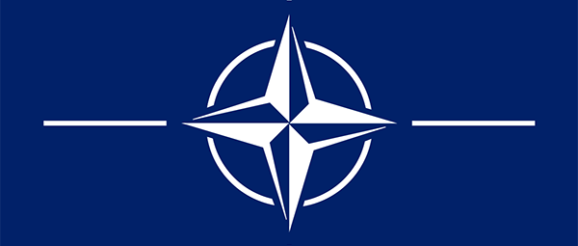Johns Hopkins becomes first university to partner with NATO Innovation Hub

By
Johns Hopkins University has become the first university in the world to partner with Innovation for Defense, the North Atlantic Treaty Organization Innovation Hub‘s new initiative. Also called I4D, the Norfolk, Virginia–based center aims to bring together a variety of partners to design solutions to challenges the organization faces.
As part of the new partnership, Johns Hopkins students will work with NATO experts to tackle how health care—whether civilian or military—is delivered and managed in conflict zones. The students involved are part of the university’s Center for Leadership Education, which prepares them for leadership roles in the professional world through a variety of courses, minors, internships, graduate programs, networking opportunities, and hands-on experiences.
“This is a pilot for us; our eventual goal is to have I4D university partnerships in all 29 NATO member countries,” says Serge Da Deppo, manager at the Innovation Hub. “What we’re creating fresh with Hopkins will serve as a model for the others going forward. Our goal is to tap into the imaginative, fertile, and hopeful minds of these young people and get their fresh take on solving many serious and thorny problems.”
“As a whole, this project will prepare us for any other design challenges we take on in our undergraduate, graduate, or even professional careers.”
The relationship between NATO and Johns Hopkins began last fall, when students from the CLE became one of 10 teams from around the world invited to compete in the NATO Innovation Hub’s Countering Unmanned Systems Innovation Challenge in Berlin, Germany. Members of a CLE entrepreneurship and innovation class, the students had designed a system to protect civilians and non-military infrastructure from hostile or terrorist drones. Though they didn’t win, their entry impressed Da Deppo, who reached out to one of their instructors, Lawrence Aronhime, who directs the CLE’s international programs.
“They told me that they were building this Innovation for Defense and were looking for university partners, and that was the beginning,” Aronhime said. “For the students, this is what it is all about: a great chance to work on real projects that make a difference in the world.”
Throughout the semester and school year, NATO representatives will visit Hopkins’ Homewood campus in Baltimore to monitor the team’s progress, give feedback, and provide new challenges.
“The NATO Project is part of CLE’s overall focus on innovation, leadership, and design. We see the Center itself as a hub for innovation, so our goals fully aligned with NATO’s,” said Aronhime.
The students working on this challenge are all members of the Clark Scholars Program, which offers select high-ability engineering students enhanced opportunities and experiences in business management, entrepreneurship, community service, and leadership. Established in 2016 with a $15 million gift to the Whiting School of Engineering from the Clark Charitable Foundation, the program is designed not only to attract talented engineering students to Johns Hopkins, but also to prepare them for leadership roles.
Sean Glaister, a sophomore biomedical engineering major from Boulder, Colorado, who is working on the battlefield triage system, views the partnership with NATO as an opportunity to apply academic knowledge learned in classrooms to a real-world problem.
“A major part of this project’s value is because of the human element: we’re in constant communication with NATO and expect to form a network of contacts in order to solve the problems we encounter,” Glaister said. “Our professors teach us problem solving and organizational thinking the way that consultants do. As a whole, this project will prepare us for any other design challenges we take on in our undergraduate, graduate, or even professional careers.”
The first step, though, is to learn about the problem, he said.
“Right now, the greatest challenge we’re having is outlining the general case of the problem in order to identify areas for improvement in current triage,” he explained. “This is a similar process and challenge faced by engineering consultants, who must first develop an understanding of the problem given to them before identifying what needs to be improved and how it can be improved.”
Pamela Sheff, director of the CLE, said that the new partnership exemplifies the CLE’s mission to prepare students to be innovative leaders.
“CLE has a very clear vision about the role universities can and must play in the larger world,” Sheff said. “That’s why we are spearheading the partnership with the NATO Transformation Command and why it is so important—it gives our students opportunities to work on real problems with global impact.”
